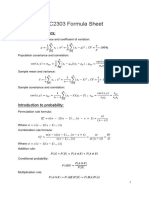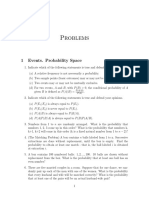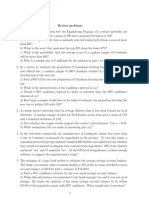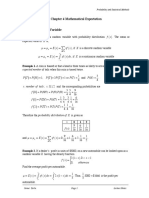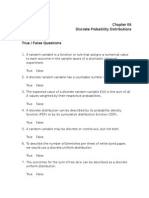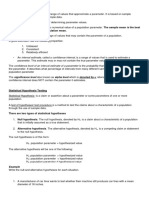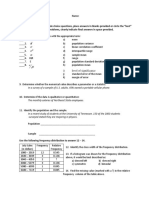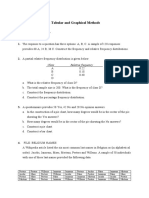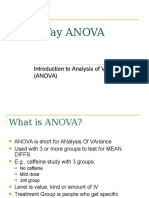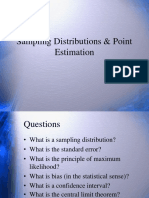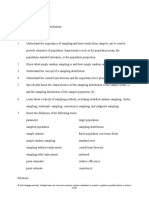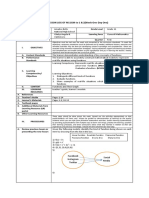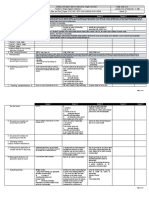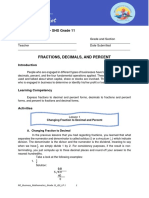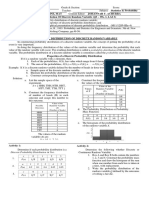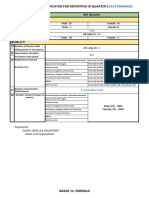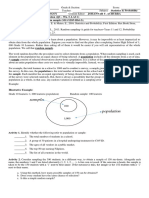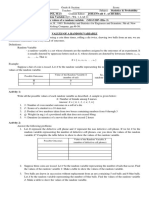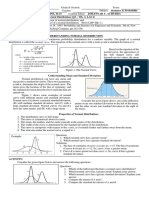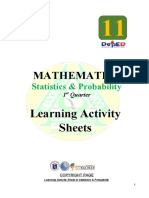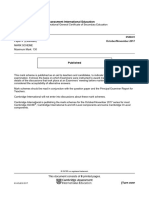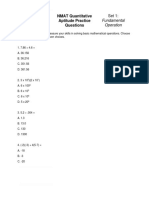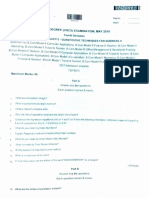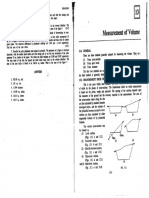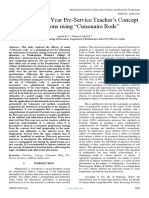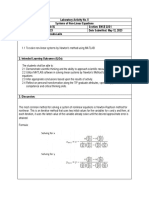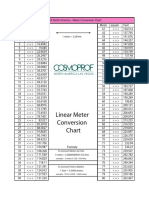0% found this document useful (0 votes)
157 views25 pagesCh1 Random Variables and Probability Distributions 0
This document provides an overview of random variables and probability distributions. It defines:
[1] A random variable as a function that assigns a numerical value to each outcome in a sample space. Random variables can be discrete or continuous.
[2] A probability function (or probability distribution) as describing the probabilities of all possible values of a discrete random variable.
[3] The cumulative distribution function (CDF) of a discrete random variable as the sum of the probabilities of all values less than or equal to a given value.
It provides examples of defining and calculating probabilities for discrete random variables and introduces probability density functions for continuous random variables.
Uploaded by
Gladzangel LoricabvCopyright
© © All Rights Reserved
We take content rights seriously. If you suspect this is your content, claim it here.
Available Formats
Download as PDF, TXT or read online on Scribd
0% found this document useful (0 votes)
157 views25 pagesCh1 Random Variables and Probability Distributions 0
This document provides an overview of random variables and probability distributions. It defines:
[1] A random variable as a function that assigns a numerical value to each outcome in a sample space. Random variables can be discrete or continuous.
[2] A probability function (or probability distribution) as describing the probabilities of all possible values of a discrete random variable.
[3] The cumulative distribution function (CDF) of a discrete random variable as the sum of the probabilities of all values less than or equal to a given value.
It provides examples of defining and calculating probabilities for discrete random variables and introduces probability density functions for continuous random variables.
Uploaded by
Gladzangel LoricabvCopyright
© © All Rights Reserved
We take content rights seriously. If you suspect this is your content, claim it here.
Available Formats
Download as PDF, TXT or read online on Scribd
/ 25



